I need to store HCURSOR in BufferedImage with its real size and color.
I have found similar questions 1 and 2 which work fine with standard 32x32 cursor, but if I change color or size then BufferedImage becomes invalid, giving me a result like this:
Firstly, my problem was to get a real cursor size. But then I found the way to get it via JNA from the registry.
Then I need to save it to BufferedImage. I tried to use code snippets getImageByHICON() and getIcon() from the first link above, but there's an error somewhere -- the image is still incorrect or broken. Maybe I don't understand how to use it correctly because I am not much familiar with BufferedImage creation.
How can I save HCURSOR to BufferedImage if I have cursors real size and CURSORINFO?
Here is my full code:
import com.sun.jna.Memory;
import com.sun.jna.platform.win32.*;
import javax.swing.*;
import java.awt.*;
import java.awt.image.BufferedImage;
class CursorExtractor {
public static void main(String[] args) {
BufferedImage image = getCursor();
JLabel icon = new JLabel();
icon.setIcon(new ImageIcon(image));
JFrame frame = new JFrame();
frame.setDefaultCloseOperation(JFrame.EXIT_ON_CLOSE);
frame.setContentPane(icon);
frame.pack();
frame.setVisible(true);
Toolkit toolkit = Toolkit.getDefaultToolkit();
Point pointerPos = new Point(1, 1);
Cursor c = toolkit.createCustomCursor(image, pointerPos, "cursorname");
frame.setCursor(c);
}
public static BufferedImage getCursor() {
// Read an int (& 0xFFFFFFFFL for large unsigned int)
int baseSize = Advapi32Util.registryGetIntValue(
WinReg.HKEY_CURRENT_USER, "Control Panel\\Cursors", "CursorBaseSize");
final User32.CURSORINFO cursorinfo = new User32.CURSORINFO();
User32.INSTANCE.GetCursorInfo(cursorinfo);
WinDef.HCURSOR hCursor = cursorinfo.hCursor;
return getImageByHICON(baseSize, baseSize, hCursor);
}
public static BufferedImage getImageByHICON(final int width, final int height, final WinDef.HICON hicon) {
final WinGDI.ICONINFO iconinfo = new WinGDI.ICONINFO();
try {
// get icon information
if (!User32.INSTANCE.GetIconInfo(hicon, iconinfo)) {
return null;
}
final WinDef.HWND hwdn = new WinDef.HWND();
final WinDef.HDC dc = User32.INSTANCE.GetDC(hwdn);
if (dc == null) {
return null;
}
try {
final int nBits = width * height * 4;
// final BitmapInfo bmi = new BitmapInfo(1);
final Memory colorBitsMem = new Memory(nBits);
// // Extract the color bitmap
final WinGDI.BITMAPINFO bmi = new WinGDI.BITMAPINFO();
bmi.bmiHeader.biWidth = width;
bmi.bmiHeader.biHeight = -height;
bmi.bmiHeader.biPlanes = 1;
bmi.bmiHeader.biBitCount = 32;
bmi.bmiHeader.biCompression = WinGDI.BI_RGB;
GDI32.INSTANCE.GetDIBits(dc, iconinfo.hbmColor, 0, height, colorBitsMem, bmi, WinGDI.DIB_RGB_COLORS);
// g32.GetDIBits(dc, iconinfo.hbmColor, 0, size, colorBitsMem,
// bmi,
// GDI32.DIB_RGB_COLORS);
final int[] colorBits = colorBitsMem.getIntArray(0, width * height);
final BufferedImage bi = new BufferedImage(width, height, BufferedImage.TYPE_INT_ARGB);
bi.setRGB(0, 0, width, height, colorBits, 0, height);
return bi;
} finally {
com.sun.jna.platform.win32.User32.INSTANCE.ReleaseDC(hwdn, dc);
}
} finally {
User32.INSTANCE.DestroyIcon(new WinDef.HICON(hicon.getPointer()));
GDI32.INSTANCE.DeleteObject(iconinfo.hbmColor);
GDI32.INSTANCE.DeleteObject(iconinfo.hbmMask);
}
}
}



